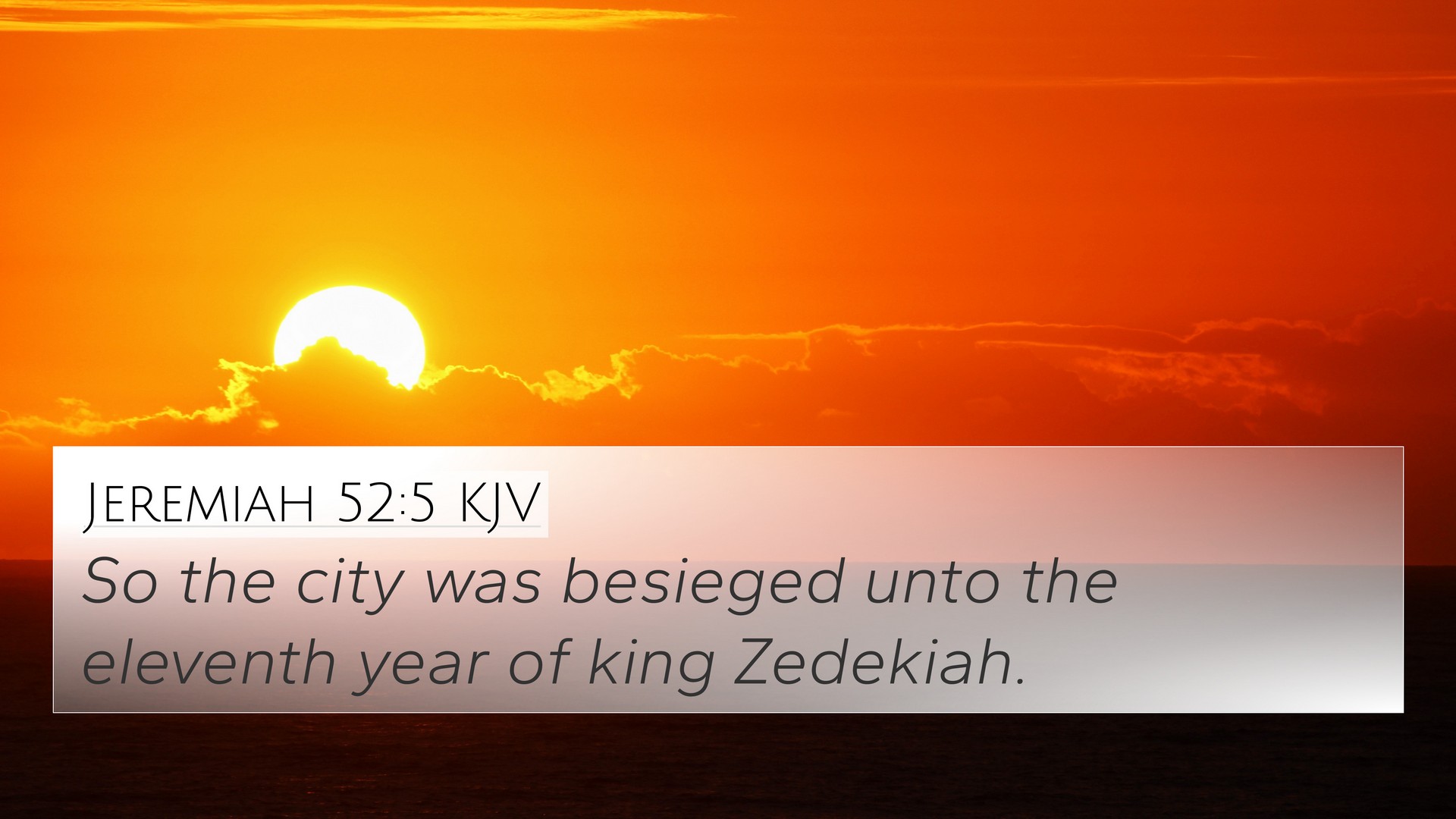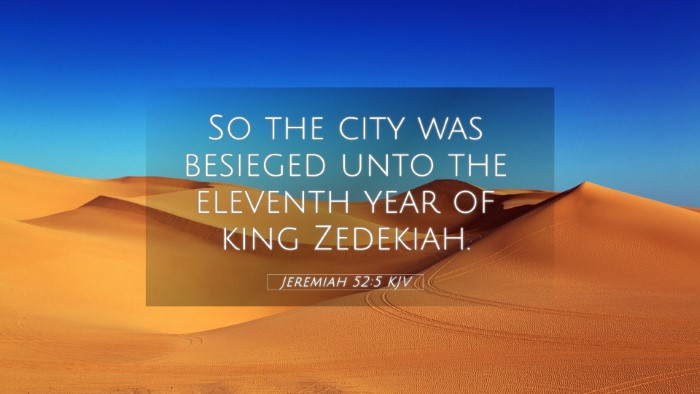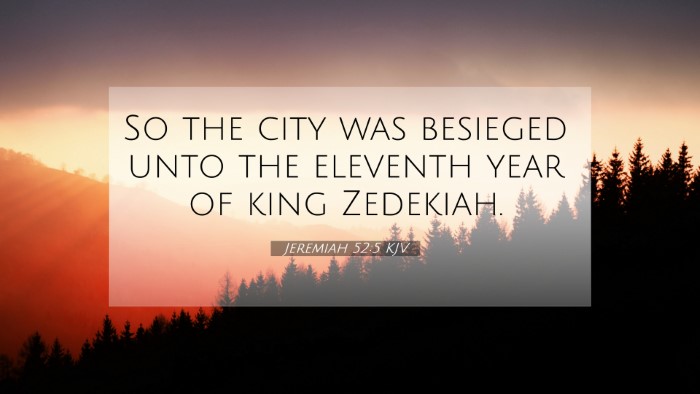Jeremiah 52:5 - Understanding the Biblical Context
The verse from Jeremiah 52:5 reads, "So the city was besieged unto the eleventh year of king Zedekiah." This passage highlights a pivotal moment in the history of Israel, illustrating the prolonged siege of Jerusalem during a time of national crisis and divine judgment.
Summary of Insights from Commentaries
The insights gathered from public domain commentaries provide depth to the understanding of this verse. Notably:
-
Matthew Henry:
Henry emphasizes the theme of divine sovereignty and judgment, indicating that the siege was both a consequence of Israel's disobedience to God and part of God's plan for the nation's restoration.
-
Albert Barnes:
Barnes elaborates that the siege's duration signifies the severity of God's judgment against Zedekiah's reign and the people's apostasy. He notes that this event led to significant prophetic fulfillments.
-
Adam Clarke:
Clarke reflects on the historical context, explaining how the siege symbolizes the end of an era for Jerusalem. He correlates the siege with the broader narrative of the Babylonian captivity, which serves as a crucial lesson on faithfulness to God.
Thematic Connections and Bible Cross-References
This verse resonates with several significant themes and cross-references throughout the Bible. Key verses that relate to Jeremiah 52:5 include:
-
2 Kings 25:1-2:
Illustrates the fall of Jerusalem, paralleling the events described in Jeremiah and emphasizing God's judgment.
-
Ezekiel 24:1-2:
Features prophetic insights into the siege and its implications for Israel, reflecting on God's warnings.
-
Daniel 9:2:
Daniel's acknowledgment of the prophecy's timeframe connects with the siege, showing continuity of God's message through the prophets.
-
Micah 3:12:
Illustrates the consequences of Israel's sins, similar to the themes in Jeremiah regarding judgment.
-
Zechariah 1:12-16:
References the future restoration of Jerusalem, providing hope beyond the siege and destruction.
-
Romans 11:25-26:
New Testament echoes of Israel's situation and God's plans for redemption and restoration are vividly seen here.
-
Lamentations 1:1-3:
The Book of Lamentations reflects the sorrow of the siege and the fall of Jerusalem, echoing themes found in Jeremiah.
-
Matthew 24:1-2:
Jesus refers back to Jerusalem's destruction, linking it to prophetic warnings and God's judgment.
-
Hebrews 11:30:
Speaking of faith, the mention of Jericho's fall indirectly relates to the broader narrative of faith and judgment in Israel's history.
-
Revelation 21:2:
Provides a hopeful conclusion to the narrative of God's people, looking ahead to the New Jerusalem post-judgment.
Cross-Referencing Biblical Texts
Understanding Jeremiah 52:5 provides a pathway to engage in cross-referencing Biblical texts. Such tools allow for exploring the deep connections and themes woven throughout scripture.
Tools for Cross-Referencing
For those interested in delving deeper into the rich context of Bible verses, consider utilizing various resources:
- Bible concordance
- Bible cross-reference guide
- Cross-reference Bible study tools
- Comprehensive Bible cross-reference materials
- Utilizing a study Bible with extensive notes
Conclusion
Jeremiah 52:5 serves as a profound reminder of God's dealings with His people—both in judgment and the promise of eventual restoration. By engaging in the comparative Bible verse analysis and utilizing cross-referencing techniques, one can uncover an intricate tapestry of divine truth that spans both the Old and New Testaments. Embracing these insights fosters a deeper understanding of scripture and its life-transforming impact.


